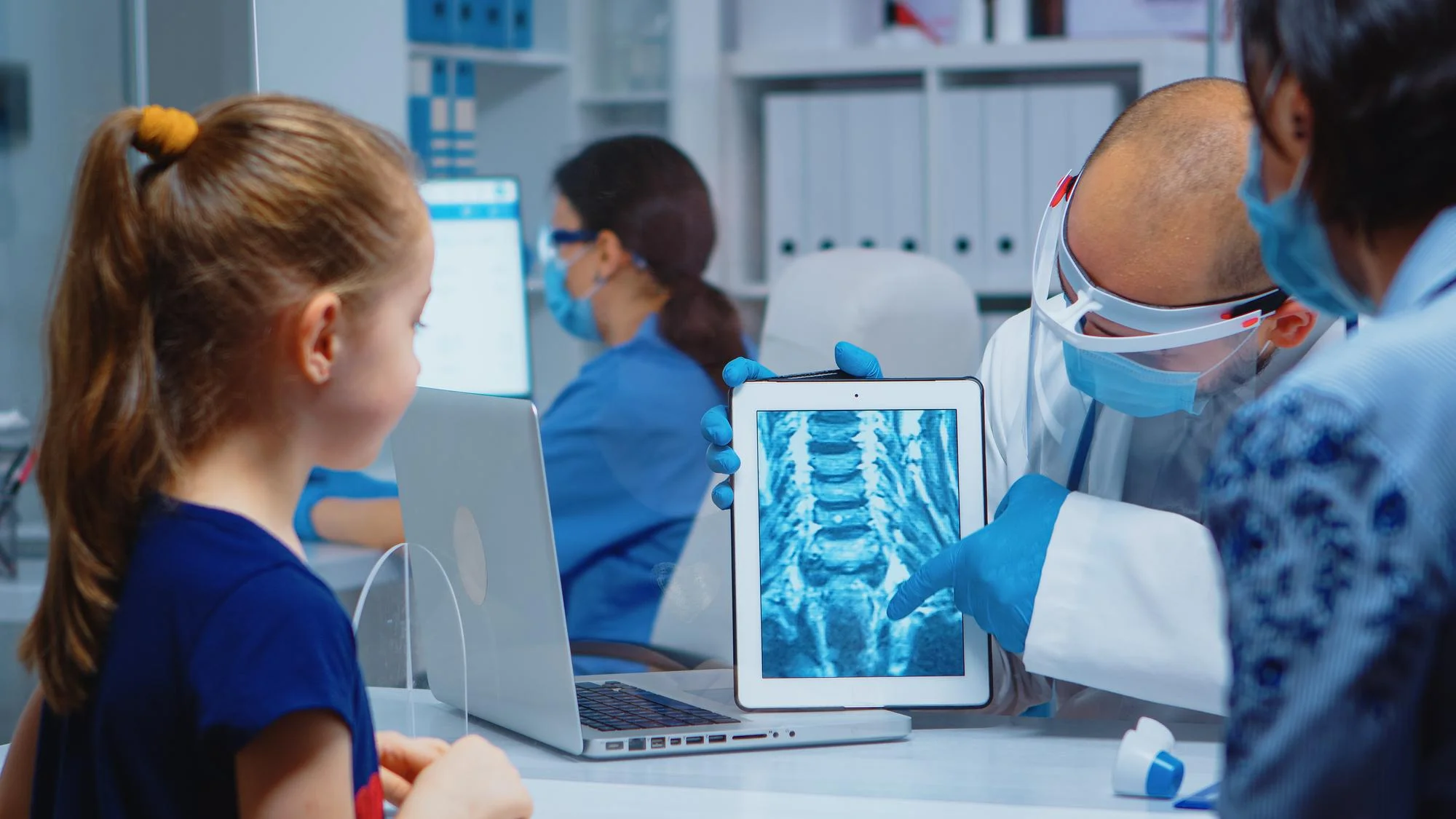DOI: 10.1016/j.jcot.2018.06.002
Advancements in pediatric orthopedic surgery are continuously evolving, aiming for precision, minimal invasiveness, and improved patient outcomes. A promising development in this field is the introduction of electronic inclinometers for accurately correcting rotational disorders of the hip in children, which is underscored in a recent study published in the Journal of Clinical Orthopaedics and Trauma.
Precision in Practice: Shifting From Visual to Electronic Measurements
Femoral derotation osteotomies are complex procedures performed to correct congenital or acquired rotational deformities of the lower limbs in pediatric patients. These deformities, if left unaddressed, can lead to significant functional impairments and discomfort. Traditional methods for assessing the exact degree of correction required have predominantly involved visual cues and the use of a goniometer or osteotomy templates, which are tools used for measuring angles. However, these methods are subject to visual estimation errors, potentially compromising the precision of the surgical outcome.
A Systematic Inquiry into Measurement Accuracy
A rigorous study conducted by Swarup Ishaan and colleagues at the Hospital for Special Surgery (New York, NY, United States) provided empirical evidence on the efficacy of electronic inclinometers in surgical procedures to correct rotational hip disorders. The researchers compared the performance of electronic inclinometers with conventional methods like the goniometer and osteotomy triangle technique.
Using a synthetic femur model, the team executed derotation osteotomies of 15° and 30°, subsequently analyzing the results through computed tomography (CT) scans read by a musculoskeletal radiologist. The study consisted of 40 proximal femoral derotation osteotomies. The outcomes revealed that the mean difference from the planned derotation angle was significantly lower when using the electronic inclinometer technique compared to the traditional methods.
Breakthroughs and Statistical Revelations
The study published with the DOI 10.1016/j.jcot.2018.06.002 unveils how the mean deviation from the planned derotation was 5.9° with the goniometer, 3.8° using the osteotomy triangle, and only 3.2° with the electronic inclinometer. While the accuracy between techniques for 15° derotation osteotomies did not show significant differences, the electronic inclinometer tended to show a greater precision particularly for 30° derotation osteotomies.
The Edge of Digital Precision
These findings have potential implications for clinical practice. The minimized variance with electronic inclinometers could enhance the accuracy of surgically corrected rotational deformities, leading to potentially better functional outcomes for pediatric patients.
To reinforce the validity of these results, references such as a study by Mylle et al. (1993) comparing methods for derotation osteotomy, and Rose et al. (2002) analyzing visual estimation of angles, establish a context where visual errors in surgical procedures have been a recurring concern.
Keywords
1. Electronic Inclinometer Hip Surgery
2. Pediatric Orthopedic Precision
3. Femoral Derotation Osteotomy
4. Rotational Disorders Correction
5. Measurement Accuracy in Orthopedics
The Potential for Improved Outcomes
The leap from traditional visual estimation methods to electronic inclinometers could revolutionize the execution of femoral derotation osteotomies in children. Reduction in surgical errors translates into more reliable corrective surgeries, potentially reducing the need for revision procedures and improving long-term joint function and gait.
Pioneering a New Standard in Surgical Accuracy
This study advocates for the integration of electronic inclinometers in clinical orthopedic practice, which aligns with a broader trend of adopting digital tools for enhanced precision in surgery. As technology continues to permeate medical practice, it is evident from research such as this that such advancements can provide considerable benefits. Devices like electronic inclinometers bridge the gap between the human eye’s capabilities and the exactitude required in complex pediatric orthopedic surgeries.
Implications for Future Research and Practice
Looking ahead, the deployment of electronic inclinometers in derotation osteotomies of the hip is expected to set a new clinical standard. The authors suggest that further studies with larger sample sizes and live surgical scenarios are warranted to corroborate these findings and evaluate long-term patient outcomes.
The research conducted by Swarup and colleagues not only sheds light on the importance of accuracy in surgical interventions but also propels the medical community towards embracing modern technology in their quest to provide superior health care.
Building on Current Knowledge: References That Shaped the Study
1. Mylle et al. (1993). “Derotation osteotomy to correct rotational deformities of the lower extremities in children. A comparison of three methods.” Acta Orthop Belg.
2. Rose et al. (2002). “Visual estimation of finger angles: do we need goniometers?” J Hand Surg [Br].
3. Schoenecker et al. (2006). “The lower extremity.” In: Morrissey R., Weinstein S., eds. Lovell & Winter’s Pediatric Orthopaedics.
4. Graham et al. (2013). “Measurement of rotational deformity: using a smartphone application is more accurate than conventional methods.” ANZ J Surg.
5. Payne et al. (1994). “Intertrochanteric versus supracondylar osteotomy for severe femoral anteversion.” J Pediatr Orthop.
A Progressive Step in Pediatric Orthopedics
The burgeoning field of pediatric orthopedics now has another tool in its armamentarium. The electronic inclinometer stands to improve the accuracy of hip derotation osteotomies, potentially improving the quality of life for many children with rotational hip disorders. As we move further into a digitized medical era, studies like this underscore the intersection between technology and improved patient care.
